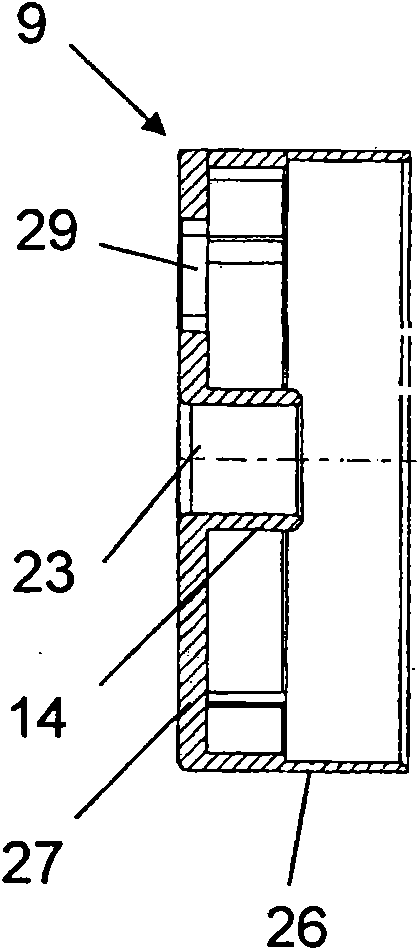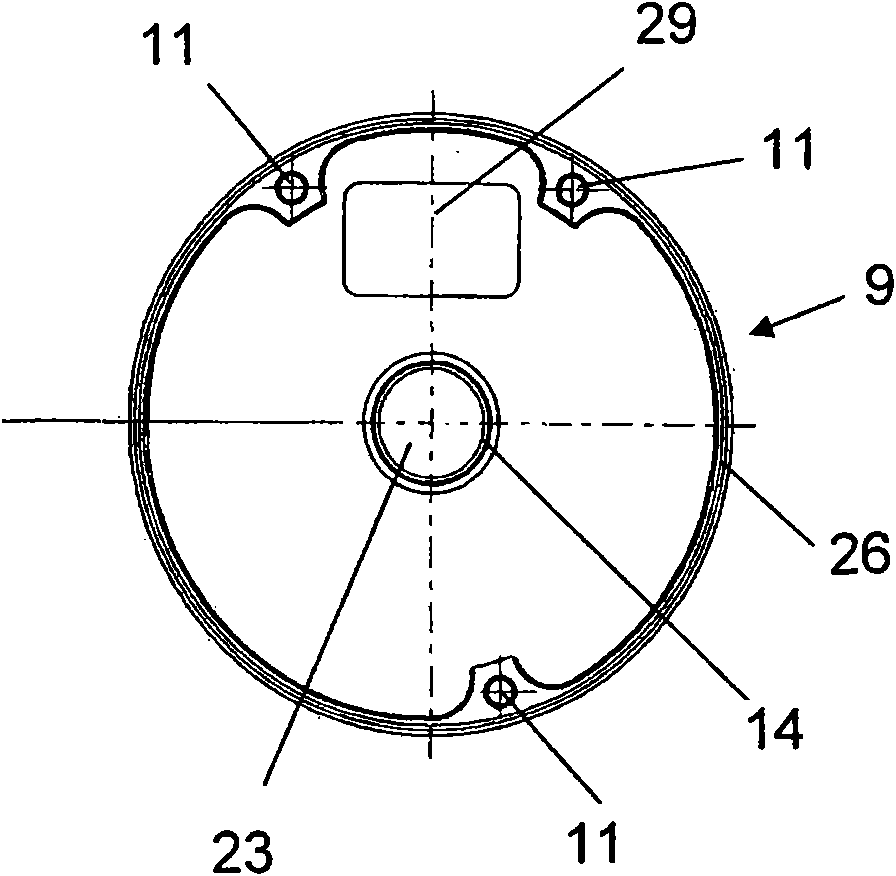Capacitive rotation sensor
A rotation sensor, capacitive technology, applied in the direction of conversion sensor output, capacitance measurement, instrument, etc., can solve the problem of rotor disk imbalance or impact, complex structure, lack, etc., to achieve the effect of preventing warping or impact
- Summary
- Abstract
- Description
- Claims
- Application Information
AI Technical Summary
Problems solved by technology
Method used
Image
Examples
Embodiment Construction
[0057] Such as figure 1 and 2 As shown, the capacitive rotation sensor proposed by the present invention mainly includes a shell flange 1 made of aluminum casting, which is designed to be cylindrical, and a clamping frame is arranged in its inner hole. Tight ball bearings 2 form the device.
[0058] The ball bearing 2 is preferably designed as a deep groove ball bearing. According to another development, it can be provided that the ball bearing is designed as a sliding bearing or generally as a rolling bearing.
[0059] In the interior, a shaft 3 is supported by a ball bearing 2 , which protrudes with a lower extension from the housing of the capacitive rotary sensor and is secured against falling out by means of a locking ring 4 . This locking ring can also be omitted. However, it can be used to additionally absorb the axial forces transmitted by the shaft 3 to the housing flange 1 .
[0060] In a manner that will be described in more detail below, a rotor support 5, pre...
PUM
 Login to View More
Login to View More Abstract
Description
Claims
Application Information
 Login to View More
Login to View More - R&D
- Intellectual Property
- Life Sciences
- Materials
- Tech Scout
- Unparalleled Data Quality
- Higher Quality Content
- 60% Fewer Hallucinations
Browse by: Latest US Patents, China's latest patents, Technical Efficacy Thesaurus, Application Domain, Technology Topic, Popular Technical Reports.
© 2025 PatSnap. All rights reserved.Legal|Privacy policy|Modern Slavery Act Transparency Statement|Sitemap|About US| Contact US: help@patsnap.com



